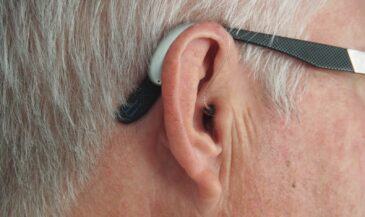By Dr. Christopher Kent
A recent case in the Michigan Court of Appeals ruled that a chiropractor does not have a duty to recognize and diagnose cardiac symptoms, or refer a patient to a medical practitioner. The court held that doing so would require a chiropractor to undertake a “medical analysis” beyond the scope of chiropractic practice. [1]
In a previous case, Attorney General v. Beno, the Supreme Court of Michigan held, “We do not believe the Legislature intended to authorize chiropractors to engage in general diagnostic techniques. Had such a result been intended, it could have been clearly stated… Rather than authorizing general diagnostic techniques, the statute limited chiropractors to those methods, which might reveal the existence of misaligned or displaced vertebrae. We fail to see how taking urine samples or throat cultures will reveal the existence of subluxations.” [2]
These cases, however, do not mean that a chiropractor does not have a duty to diagnose. At issue is the extent of that duty. The scope of chiropractic is delineated by statute. The Michigan statute defines chiropractic practice as including, inter alia, “Diagnosis, including spinal analysis, to determine the existence of spinal subluxations or misalignments that produce nerve interference, indicating the necessity for chiropractic care.” [3] “Diagnosis” by a chiropractor in Michigan includes determining subluxation and nerve interference. It does not include full-body medical diagnosis.
Two Wisconsin cases are instructive. In Kerkman v. Hintz, [4] the Supreme Court of Wisconsin noted, “For purposes of malpractice action against a chiropractor, chiropractor’s decision to treat cannot be tested in accordance with medical knowledge; rather, it must be tested in accordance with chiropractic knowledge.”
Furthermore, the Court stated, “The legislature has recognized the practice of chiropractic as a separate and distinct health care discipline… By limiting chiropractors to the use of chiropractic adjustments and the principles or techniques of chiropractic science in the diagnosis, treatment or prevention of disease while prohibiting the use of traditional medical tools, e.g. drugs and surgery, the legislature has recognized that the practice of chiropractic is distinct from the practice of medicine.”
In Kerkman, the Court very clearly defined the extent of a chiropractor’s duty to diagnose: “In summary, we hold that a chiropractor has a duty to (1) determine whether the patient presents a problem which is treatable through chiropractic means; (2) refrain from further chiropractic treatment when a reasonable chiropractor should be aware that the patient’s condition will not be responsive to further treatment; and (3) if the ailment presented is outside the scope of chiropractic care, inform the patient that the ailment is not treatable through chiropractic means.”
In Goldstein v. Janusz, [5] the Court of Appeals of Wisconsin relied on Kerkman when it ruled, “Chiropractors have no duty to recognize medical problems.” The rationale was that “to do so would require chiropractors to make medical determinations which, under Wisconsin law, they are not licensed to make.” The Court further noted “Although chiropractors may take and analyze x-rays, they only do so for diagnostic or analytical purposes in the practice of chiropractic.”
Should a chiropractor unlawfully perform procedures, which constitute the practice of medicine, the D.C. may be subject to tort liability in addition to being charged with the unauthorized practice of medicine.
In Treptau v. Beherens Spa, Inc., a chiropractor undertook to examine and treat a patient’s foot using bandages and diathermy. The Wisconsin Supreme Court stated, “Plaintiffs do not claim there was malpractice on the part of the defendant while Beherens was engaged in the practice of chiropracty (sic) by chiropractic manipulation or adjustments of the spine. Instead, plaintiffs contend there was malpractice when he and his associates went beyond the practice of chiropracty (sic) and entered into the general field of the practice of medicine…in so far as there was thus an invasion of the general field of that practice, the methods thus used by defendant’s employees in diagnosis and treatment were subject to the rules applicable to the practice of medicine and surgery.” [6]
The court in Treptau relied on Kuechler v. Volgmann. The Kuechler court held, “When a chiropractor assumes to diagnose and treat disease he must exercise the care and skill in so doing that is usually exercised by a recognized school of the medical profession.” [7]
Every chiropractor should be familiar with applicable state statutes, rules, and regulations. A D.C. should also understand the implications of relevant case law. This month’s column is not a substitute for legal advice. It should, however, apprise the chiropractor of the peril of unlawfully encroaching upon the practice of medicine.
References
1. Vos III J: D.C. not required to make “medical analysis.” http://www.chiroweb.com/archives/19/07/19.html
2. 373 N.W.2d 544, 422 Mich. 293
3. MCL 333.1640(1); MSA 14.15(16401)(1)
4. 418 N.W.2d 795, 142 Wis.2d 404
5. 582 N.W.2d 78, 218 Wis.2d 683
6. 20 N.W.2d 108, 247 Wis.438
7. 192 N.W. 1015, 180 Wis. 238, 242-43






























































































































































